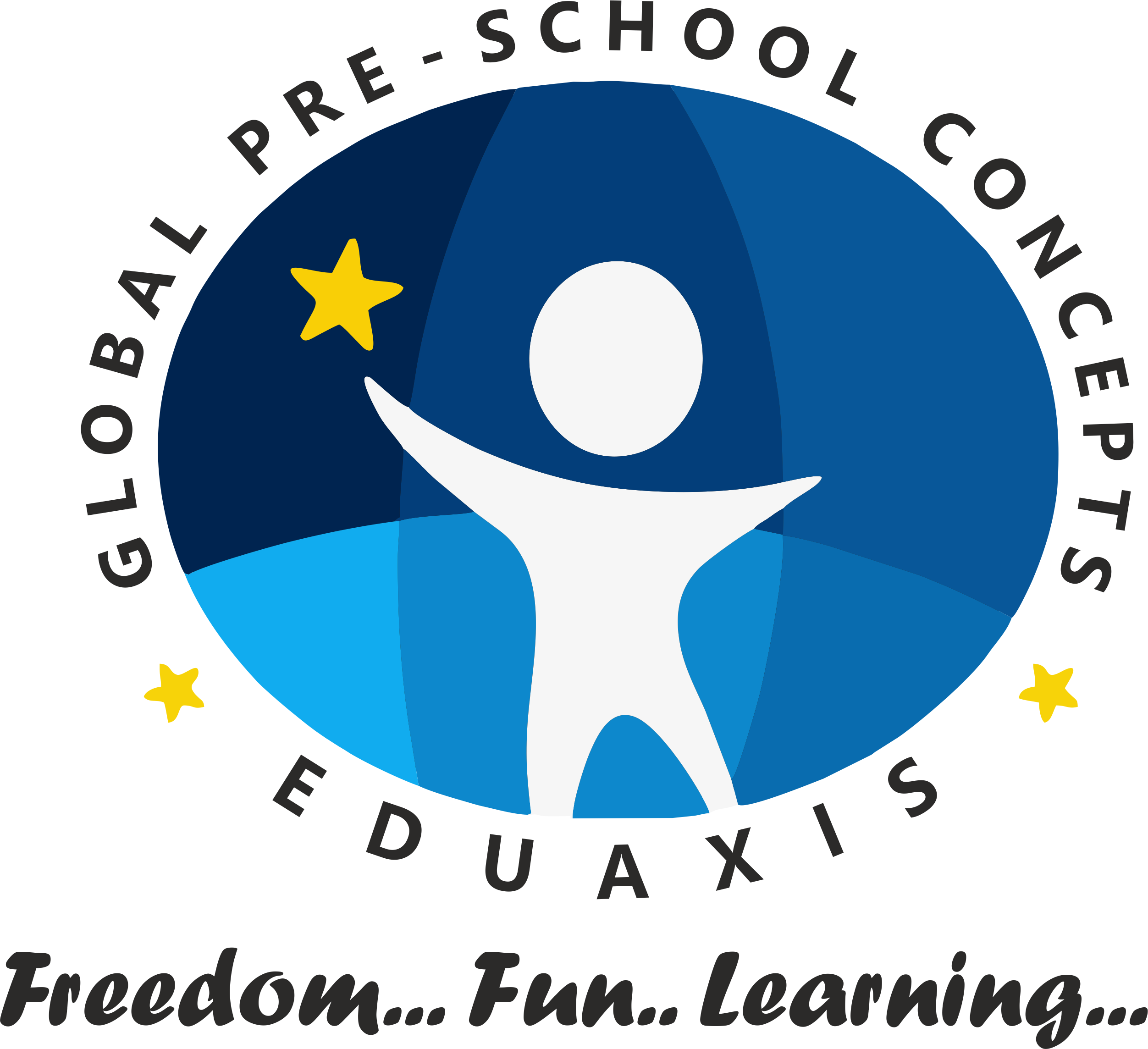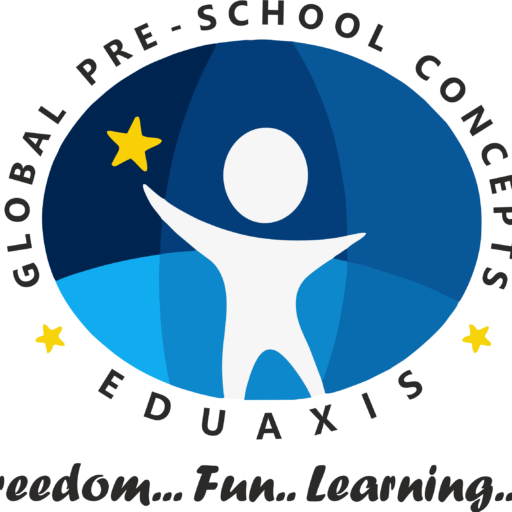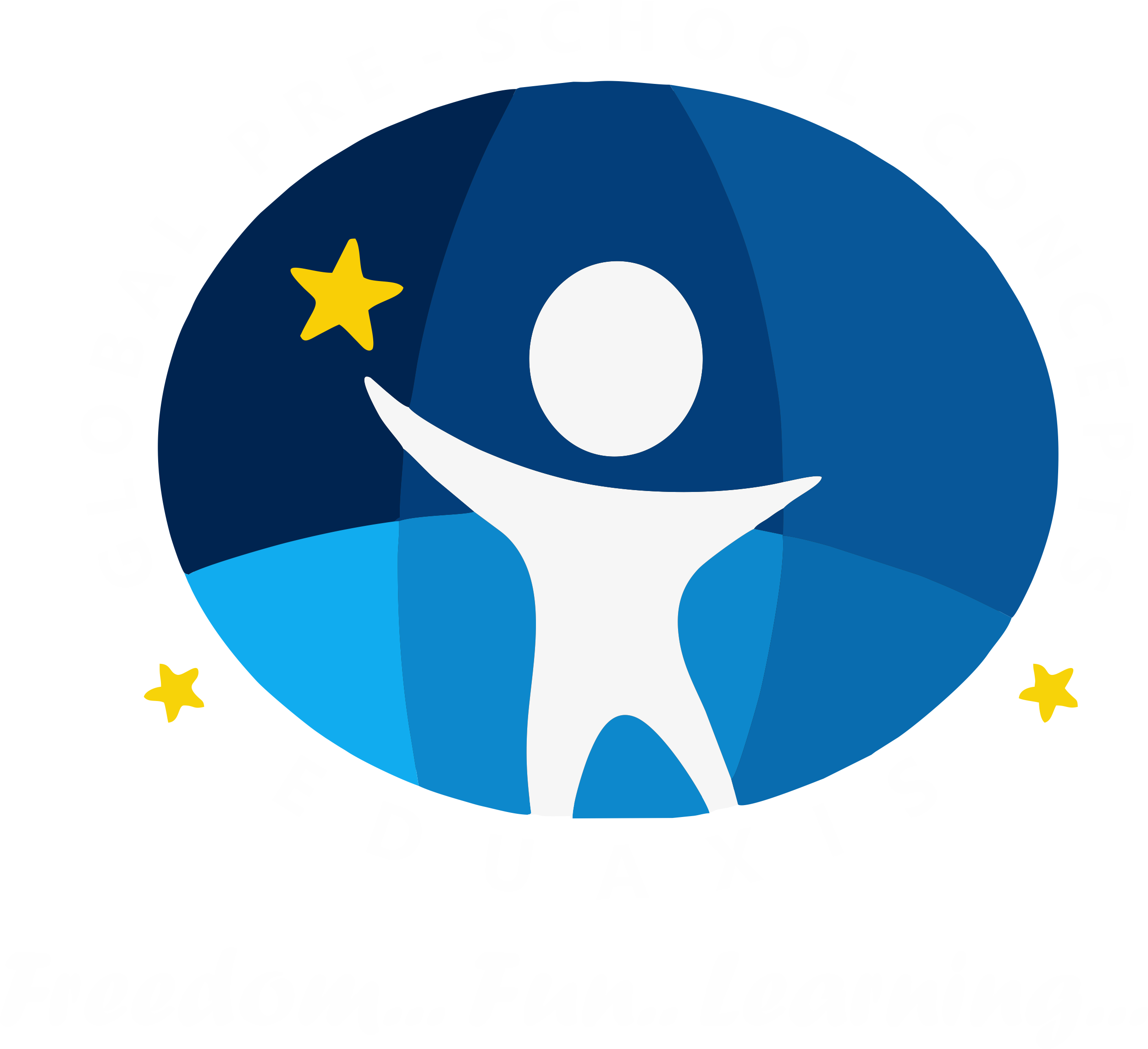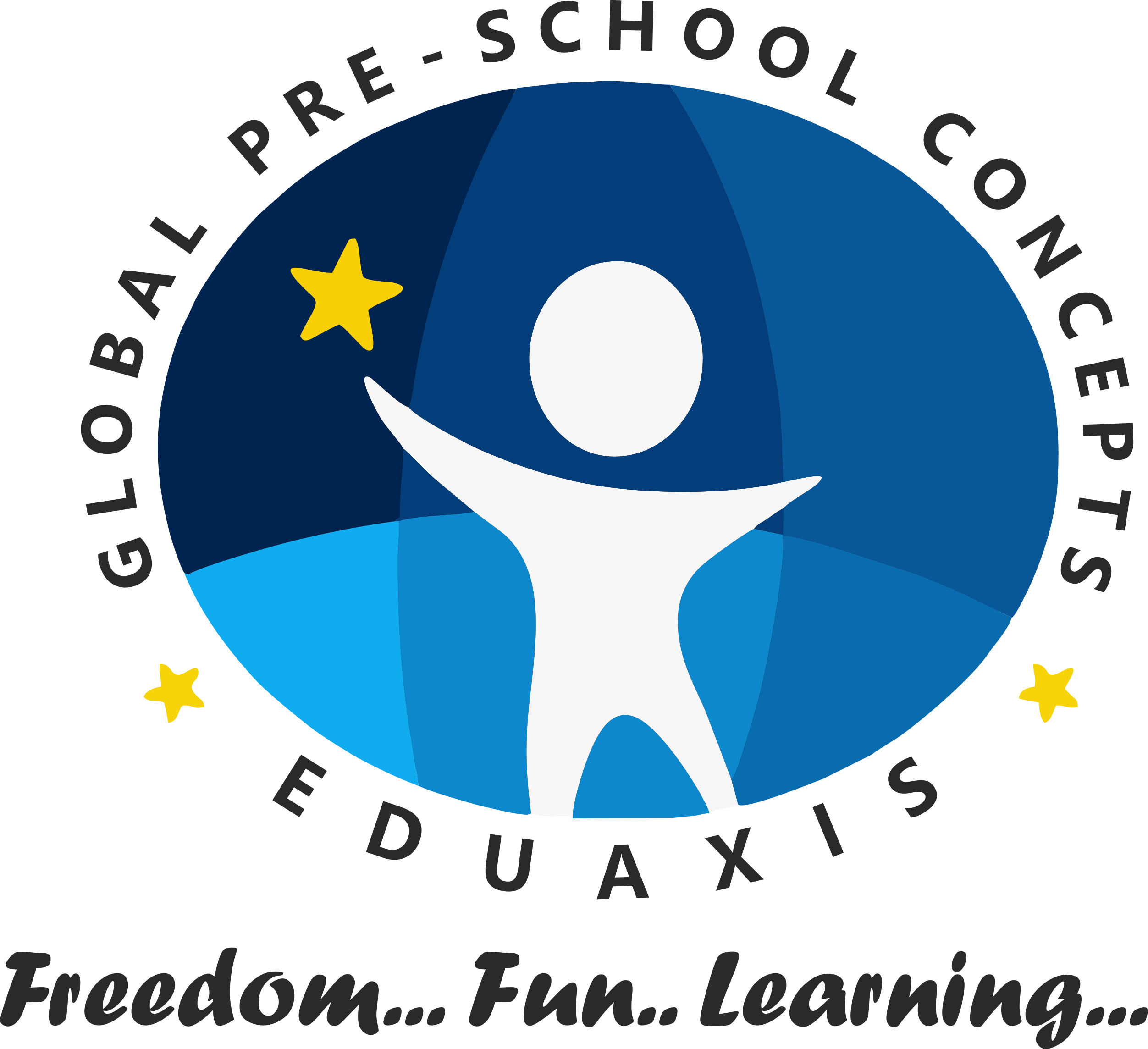Have any questions? We are happy to answer
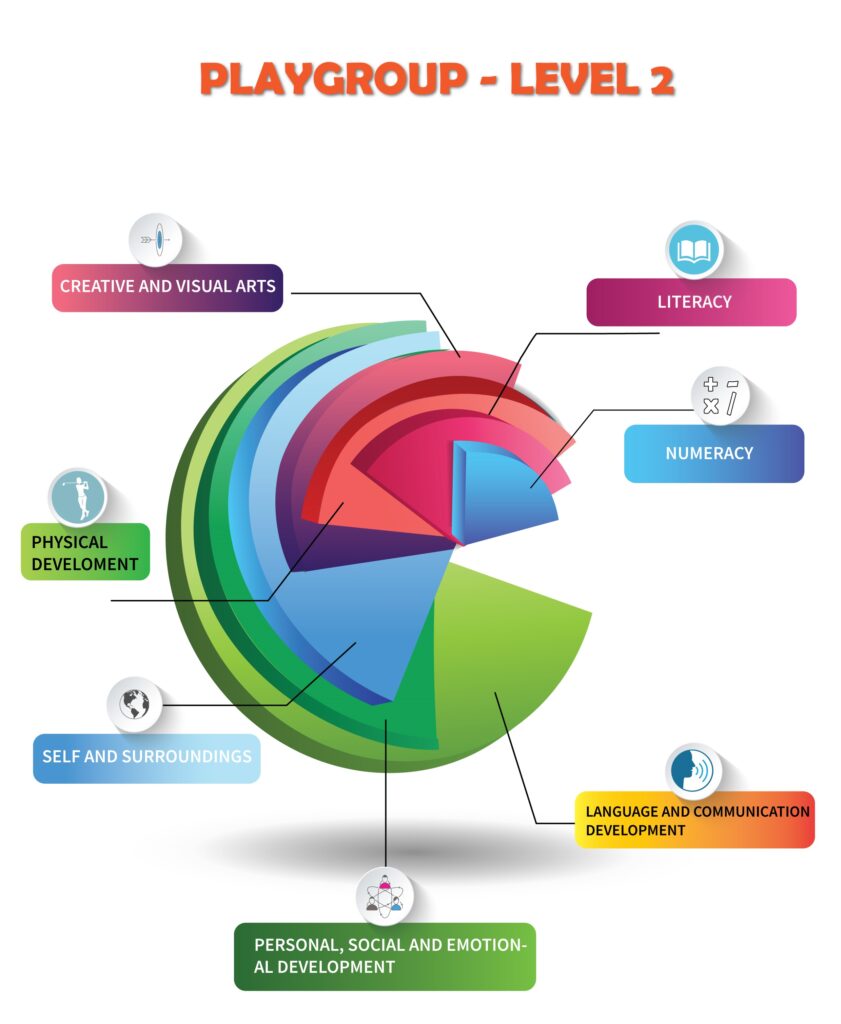
A wholesome program for the first “school experience” of children,where learning is processed through ‘play – way’ teaching techniques to build communication, intra personal, inter personal, fine and grossmotor skills for a smooth transition to the next level.
LANGUAGE AND COMMUNICATION DEVELOPMENT
Communication is defined as a receptive and expressive language skill. Thought process and communication depend on language. Linguistic development assists in understanding the different ways of communication. Enrichment of vocabulary through circle time, storytelling, rhymes, songs picture reading etc. improves communication skills and inter personal relationship with peer group.
PERSONAL, SOCIAL AND EMOTIONAL DEVELOPMENT
Interpersonal Skills
These skills help children to establish partnership with the classroom facilitator and to express needs and wants. Concept of greeting, sharing, helping and self-control are also introduced in a guided manner.
Intrapersonal or Emotional Skills
Intrapersonal skills are about self -awareness and regulating the internal attitudes. This helps the child in building relationships with others and establish emotional skills.
Self Care Activities
Self-care helps children to identify their physical needs and learn to take care of them by Inculcating healthy personal grooming rituals. Awareness of Hygiene and developing good habits is the first step towards self-care.
PHYSICAL DEVELOPMENT
KINESTHETIC AND GROSS MOTOR SKILLS Dance and Sports help in physical development and instil an interest in rhythmic movements and music.
THE CONCEPT OF SELF AND SURROUNDINGS
Understanding the concept of self and being aware of the self, family, environment and things in the environment.
SENSORY DOMAIN
Understanding the senses – to build awareness about the usage of the five sense organs – Visual, Auditory, Tactile, Olfactory and Taste are the various domains.
FINE MOTOR SKILLS
Fine motor skills involve and help develop the smaller muscles in the fingers, thumb and wrist that helps prehensile movements and cognitive thinking. The development of these skills allows children to complete tasks such as writing, drawing, buttoning, lacing, pouring etc.
COGNITIVE OR INTELLECTUAL SKILLS
Cognitive skills pave the way to develop understanding, attentiveness, enhanced memory and thinking in children. Paring and matching the same objects, letters or numbers are activities offered for cognitive development.
NUMERACY
Introduction to numeracy develops logical thinking in children. They become aware of features like size, shape, color or weight of objects. They also acquire Logical mathematical knowledge –Concept of numbers & Recognition of Numbers and quantity.
LITERACY
Recognition, listening and speaking are very important parameters that need to be guided and developed cautiously, which in turn assist in reading and writing. Repetition of concepts in a guided form is utilized to enhance memory, concentration and attention in children. Tracing and recognition of patterns are introduced at this level. At this Level 3,communication and language take precedence over Literacy.
CREATIVE AND VISUAL ARTS
ASETHETIC SKILLS Helps in developing hand and eye coordination, concentration and spatial awareness. Introduction to scribbling helps children to make a connection between their actions and what is seen on paper. Coloring paves the way for writing.
OBJECTIVES
- Building values in children.
- Improving communication skills.
- Bringing up independent and responsible children.
- Positive disciplining.
- Help children socialize.
By the end of the program children should be able to:
- Communicate basic needs
- Understand simple commands and short sentences.
- Actively participate in class activities.
- Recite the Alphabets in order A-Z.
- Recognize Alphabets A-Z.
- Recognize Patterns.
- Recite Nursery Rhymes.
- Understand and sequence stories verbally or through picture sequencing.
- Recite Number 1-20.
- Hold the crayons or pencils firmly.
- Colour within the given boundaries.
- Recognize the basic shapes and colours.
- Be aware of concepts of self and surroundings.
- Actively participate in Dance, Art and Kinaesthetic activities
